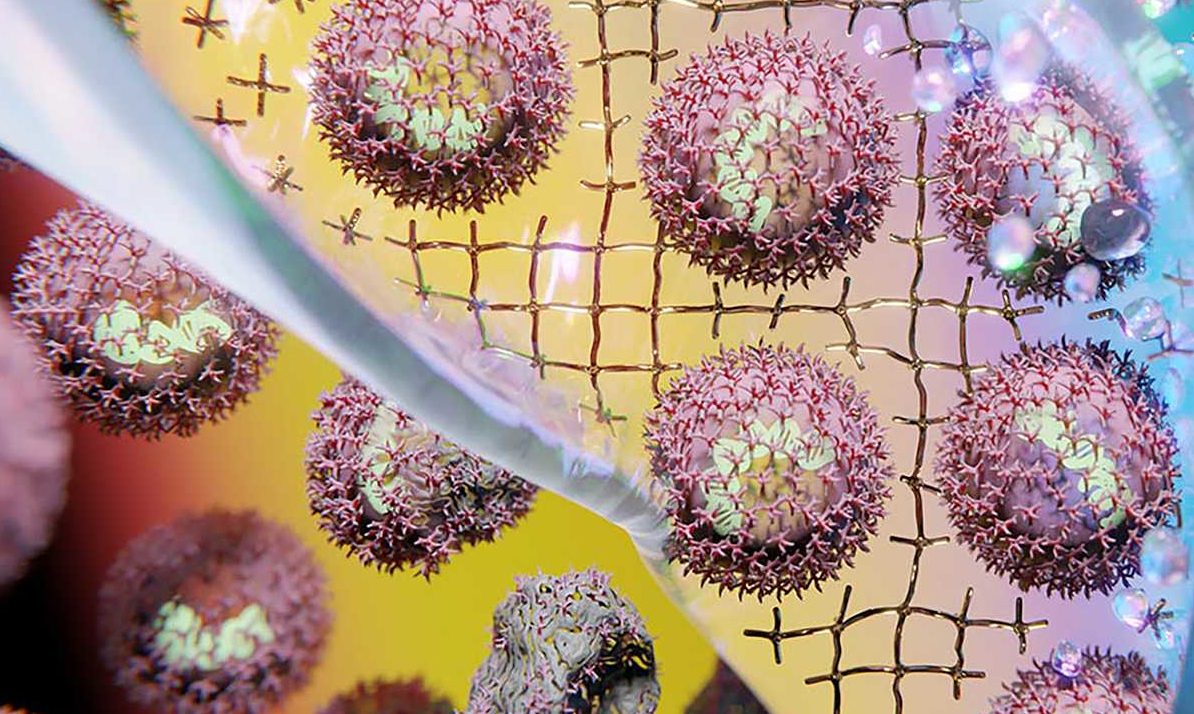When heated, it can be tossed in the trash: some vaccines and other medical materials cost billions to refrigerate, and large quantities become unusable due to temperature fluctuations. The researchers now offer a potential solution to the problem: They’ve developed a hydrogel as a storage medium for the active protein components, which wraps around the material like a protective layer and can thus make it durable without refrigeration. To use, it can be easily released with a harmless solvent. Developers say the concept has the potential to reduce losses and delivery problems, especially in the vaccine sector.
Vaccines based on the effects of dead or harmless proteins or viruses have proven to be effective in protecting us from infectious diseases and limiting their spread and further development. However, one challenge is sometimes moving active ingredients from manufacturers to remote locations. As with other protein substances such as enzymes, the most problematic aspect is temperature. Because most of them have to stay below ten degrees Celsius constantly in order to maintain their effectiveness.
Corresponding cooling is associated with enormous costs: in 2020, it is estimated that US$17.2 billion has been spent on cold chains and another significant increase is expected. Despite the efforts, logistical issues take a heavy toll: many of the active protein components end up in the trash. Especially in countries with poor infrastructure, cold chains often cannot be maintained uninterrupted and valuable materials become unusable. Against this background, the research team led by Bruno Marco Dufort of the Swiss Federal Institute of Technology in Zurich is working to develop alternative methods to protect the active ingredients from temperature fluctuations.
Polymers keep proteins in place
The concept they now present is based on freezing bioparticles so that they can no longer interact with each other when exposed to heat. Marco-Dufort explains the background: “You have to imagine the problem as with the egg protein: at room temperature or in the refrigerator, it retains the viscous protein structure. But in boiling water or in a pan, this changes completely. The situation is similar for the proteins in the vaccine: Once exposed to certain temperatures, they clump together. This clumping cannot be reversed even if the inoculum is cooled again. After all, you cannot hatch an egg again,” says Marco Dufort.
To prevent caking, scientists have developed a special formula for the so-called hydrogel. A biocompatible polymer based on polyethylene glycol (PEG) ensures the stability of the active ingredients. It forms a kind of packaging that encapsulates and separates proteins from one another. This allows them to withstand significantly higher temperatures without losing their effectiveness: Instead of the traditional range of two to eight degrees Celsius, the hydrogel system allows the proteins to withstand temperatures of up to 65 degrees Celsius, the researchers report.
Wide application possibilities
It is clear that the release of encapsulated substances at the point of use is also not a problem: all that needs to be done is to add a harmless glucose solution to the hydrogel. Then the sugar molecules interact with the components of the PEG network, thereby dissolving them. The researchers have already shown that the system works with various protein substances, including heat-sensitive enzymes and a protein-based vaccine. It has also been shown that the system can thermally stabilize type 5 adenoviruses. These viruses are increasingly important in vaccine development as carriers of genetic molecules. Recombinant adenovirus vectors have also been used in the fight against COVID-19.
According to the researchers, direct application of the system is already possible in the transport of heat-sensitive enzymes. However, the researchers say that safety tests and clinical studies are still required before the method can be used in the vaccination sector. As they emphasized in the conclusion, there can be much to gain from this: “Vaccines’ temperature sensitivity is a major obstacle to global campaigns, as vaccine distribution efforts and administrative costs outweigh production costs,” says Marco Dufort. “If you want to improve cold chains, massive investments are required. On the other hand, packaging is a cost-saving solution, so the money can be used to produce more vaccines – which can save more lives.”
Source: Swiss Federal Institute of Technology in Zurich, specialized article: Science Advance, doi: 10.1126/sciadv.abo0502

“Alcohol buff. Troublemaker. Introvert. Student. Social media lover. Web ninja. Bacon fan. Reader.”







More Stories
Pluto: Astrophysicists have now found a scary explanation
“Time seems to cure long Covid.”
Science: The use of artificial intelligence is changing the way hospitals operate